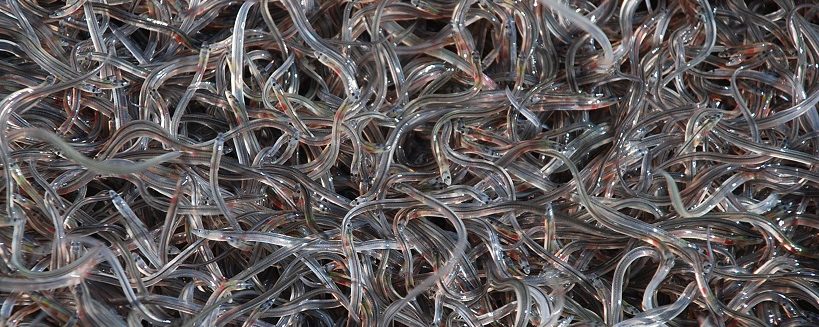
Researchers have developed a new method to identify illegally trafficked European eels, and it has already led to the arrest and prosecution of smugglers in Hong Kong.
The team’s DNA testing method has proven to be quick, highly accurate at detecting protected wildlife, easy to administer and cheap, costing about $1 per sample. It was originally developed to help customs officials identify protected shark species for fins and other shark meat passing through borders. Initially deployed in Hong Kong, customs officials there advised they also needed help identifying illegal shipments of the critically endangered European eel ( Anguilla anguilla). Within weeks, the researchers were able to replicate the testing method for the eel, according to FIU marine scientist Demian Chapman, one of the developers of the testing method.
“This test works for anything with DNA,” Chapman said. “The endgame for us is that this technology will be at every border checkpoint in the world.”
The European eel is currently listed in Appendix II of the Convention on International Trade in Endangered Species of Wild Fauna and Flora (CITES). That means any trade of the species requires permits certifying traded specimens were legally caught and traceable through the supply chain. The traceable part has been one of the biggest challenges for customs officials. Many European eels are traded as juveniles, known as glass eels, making them hard to identify because many species look the same at this stage. This new testing method uses a quick DNA test dependent on a series of primers developed by the research team.
The test can identify a species from a processed meat sample, living specimen or even the water they are transported in, picking up environmental DNA left behind by the animal. Easy to administer, any customs officer can quickly test dozens of items in a shipment. If DNA of a European eel is identified from countries where export is illegal, it’s enough evidence for authorities to detain expected smugglers, seize shipments and pursue a more in-depth investigation, including confirmatory testing in a lab.
The test was first deployed in December, when two men arrived at Hong Kong International Airport from Portugal via Moscow with eels found in their four checked bags. There is presently an export ban on this species from the European Union. Customs officials contacted Diego Cardeñosa, a Ph.D. candidate from Stony Brook University and researcher in the FIU Predator Ecology and Conservation Lab, who was living in Hong Kong at the time. He quickly headed to the airport and was able to test the contents of the suitcases while the suspects were detained and Cardeñosa positively identified the glass eels as European eels. The men were arrested and are currently facing prosecution for wildlife trafficking. The value of the eels they were carrying is estimated at $300,000.
“Before the development of this protocol, Hong Kong authorities were only able to confiscate eels, but the smugglers were free to go and leave the country without facing any charges,” Cardeñosa said. “This situation presented no deterrent for illegal wildlife traffickers, other than potentially losing the valuable cargo. Now, Hong Kong authorities can have on-site evidence within a few hours and detain and prosecute illegal eel smugglers.”
The European eel cannot be commercially bred in captivity because of the complexity of their life cycle — they live in rivers, spawn in the open ocean, and then the glass eels return to the rivers to live out their lives. With aquaculture ruled out, the capture of young eels that can be kept in captivity and grown for meat has become a booming albeit illegal business in many parts of the world.
The research team also includes Matthew Gollock, aquatic species and policy senior program manager at the Zoological Society of London.
“We hope this new technology can begin to be adopted and deployed at international borders, enabling officials to effectively disrupt the illegal wildlife trade of species such as eels and sharks,” Gollock said.
The researchers are already working with countries in Latin America to test for illegally trafficked sharks and continue to develop new sets of primers in anticipation of more shark species gaining protection when CITES convenes next month.
“At the end of the day, it’s all DNA,” Chapman said. “We always knew there was a need for this for sharks, but we also know this mirrors a need for other wildlife. For us, it has always been about getting the technology at the borders for sharks and then see what else it can be used for.
The research is supported by the Paul G. Allen Family Foundation and conducted in collaboration with the Agriculture Fisheries and Conservation Department in Hong Kong. The findings were published this week in Conservation Science and Practice.
